【Java】JDK源码分析-LinkedList
JDK源码分析-LinkedList
WriteOnRead发布于 今天 15:18
1. 概述
相较于 ArrayList,LinkedList 在平时使用少一些。
LinkedList 内部是一个双向链表,并且实现了 List 接口和 Deque 接口,因此它也具有 List 的操作以及双端队列和栈的性质。双向链表的结构如下:

前文分析了 Queue 和 Deque 接口,正是因为 LinkedList 实现了 Deque 接口。LinkedList 的继承结构如下:
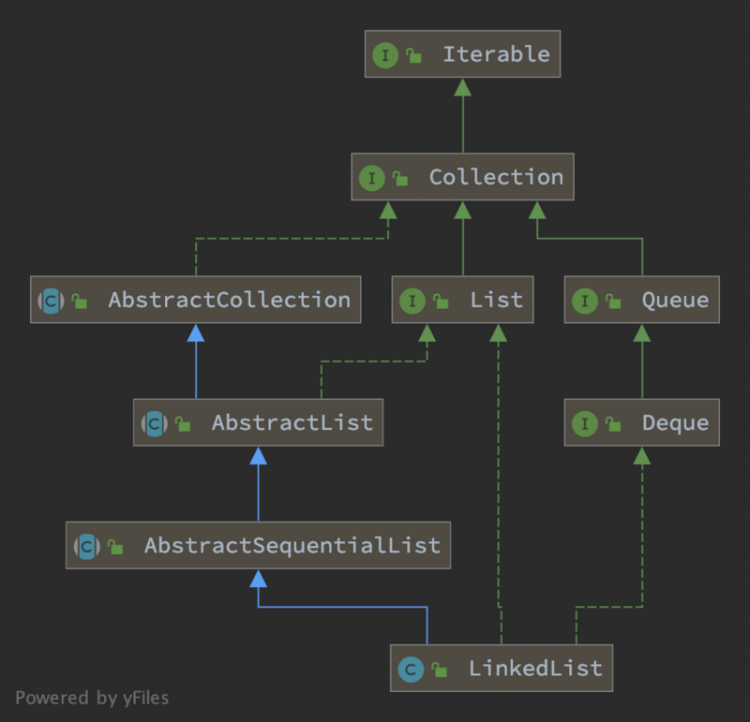
2. 代码分析
2.1 结点类 Node
查看 LinkedList 的源码可发现它内部有个嵌套类 Node,代码如下:
private static class Node<E> {E item; // 存储的数据
Node<E> next; // 后继结点
Node<E> prev; // 前驱结点
Node(Node<E> prev, E element, Node<E> next) {
this.item = element;
this.next = next;
this.prev = prev;
}
}
LinkedList 是双向链表的实现,而该 Node 类则是链表的结点。
此外,LinkedList 还有几个成员变量如下:
// list 的长度transient int size = 0;
// 链表头结点
transient Node<E> first;
// 链表尾结点
transient Node<E> last;
2.2 构造器
LinkedList 有两个构造器,如下:
public LinkedList() {}
public LinkedList(Collection<? extends E> c) {
this();
addAll(c);
}
其中第一个为无参构造器;第二个为使用指定的集合构造,并调用 addAll(),继续跟进该方法,代码如下:
public boolean addAll(Collection<? extends E> c) {return addAll(size, c);
}
public boolean addAll(int index, Collection<? extends E> c) {
checkPositionIndex(index);
// 将集合元素转为数组
Object[] a = c.toArray();
int numNew = a.length;
if (numNew == 0)
return false;
// 获取当前链表的前驱和后继结点
Node<E> pred, succ;
if (index == size) { // 尾结点的前驱和后继结点
succ = null;
pred = last;
} else { // 若非尾结点,获取指定位置的结点
succ = node(index);
pred = succ.prev;
}
// 循环将数组中的元素插入到链表
for (Object o : a) {
@SuppressWarnings("unchecked") E e = (E) o;
Node<E> newNode = new Node<>(pred, e, null);
if (pred == null)
first = newNode;
else
pred.next = newNode;
pred = newNode;
}
// 若插入到末尾,则数组中的最后一个元素就是尾结点
if (succ == null) {
last = pred;
} else {
// 若插入到指定位置,将数组中最后一个元素与下一个位置关联起来
pred.next = succ;
succ.prev = pred;
}
size += numNew;
modCount++;
return true;
}
其中 node(index) 方法为获取指定位置的结点,代码如下:
Node<E> node(int index) {// assert isElementIndex(index);
// 若下标在前一半,则从前往后遍历;否则从后往前遍历
if (index < (size >> 1)) {
Node<E> x = first;
for (int i = 0; i < index; i++)
x = x.next;
return x;
} else {
Node<E> x = last;
for (int i = size - 1; i > index; i--)
x = x.prev;
return x;
}
}
该方法通过遍历链表获取指定的元素。
值得注意的是,该方法并非直接从头到尾遍历整个链表,而是先判断下标的位置,若在前一半则从前往后遍历;否则就从后往前遍历。这样能减少遍历结点的个数。
与此同时,get(index) 方法内部也是这样实现的:
public E get(int index) {checkElementIndex(index);
return node(index).item;
}
2.3 常用方法
之前分析 Queue 和 Deque 的时候提到:Queue 中的方法在 Deque 中都有对应的。下面简单分析 LinkedList 中一些常用的方法。
新增结点方法:add(), addLast(), offerLast()
public boolean offerLast(E e) {addLast(e);
return true;
}
public void addLast(E e) {
linkLast(e);
}
public boolean add(E e) {
linkLast(e);
return true;
}
可以看到他们都是调用了同一个方法 linkLast(e) 实现的,如下:
void linkLast(E e) {final Node<E> l = last;
final Node<E> newNode = new Node<>(l, e, null);
last = newNode;
// 若链表为空,则新结点为头结点
if (l == null)
first = newNode;
// 若链表不为空,将新结点插入到链表尾部
else
l.next = newNode;
size++;
modCount++;
}
该操作就是将指定的结点添加到链表末尾。
删除结点方法:poll(), pollFirst(), removeFirst()
public E poll() {final Node<E> f = first;
return (f == null) ? null : unlinkFirst(f);
}
public E pollFirst() {
final Node<E> f = first;
return (f == null) ? null : unlinkFirst(f);
}
public E removeFirst() {
final Node<E> f = first;
if (f == null)
throw new NoSuchElementException();
return unlinkFirst(f);
}
可以看到这三个方法都是调用 unlinkFirst() 方法实现的,其代码如下:
private E unlinkFirst(Node<E> f) {// assert f == first && f != null;
final E element = f.item;
final Node<E> next = f.next;
f.item = null;
f.next = null; // help GC
first = next;
if (next == null)
last = null;
else
next.prev = null;
size--;
modCount++;
return element;
}
该方法的操作就是从链表头部移除一个结点。
向单链表插入和删除结点的操作示意图如下(双链表比这里多了前驱结点):
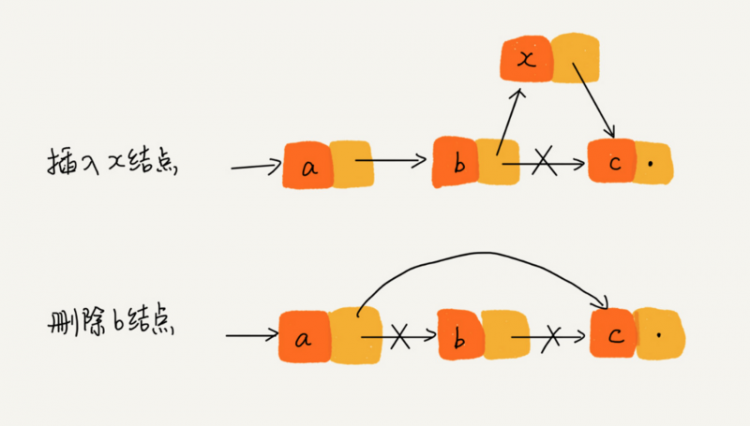
栈的入栈(push)和出栈(pop)操作:
public void push(E e) {addFirst(e);
}
public E pop() {
return removeFirst();
}
可以看到这两个方法直接调用了双端队列的实现方法。即,该栈是一个「链式栈」。
3. 线程安全性
线程安全的概念不再赘述。分析以下场景:
若有线程 T1 对 LinkedList 进行遍历,同时线程 T2 对其进行结构性修改。
对 LinkedList 的遍历是通过 listIterator(index) 方法实现的,如下:
public ListIterator<E> listIterator(int index) {checkPositionIndex(index);
return new ListItr(index);
}
private class ListItr implements ListIterator<E> {
private Node<E> lastReturned;
private Node<E> next;
private int nextIndex;
// 初始化时二者是相等的
private int expectedModCount = modCount;
ListItr(int index) {
// assert isPositionIndex(index);
next = (index == size) ? null : node(index);
nextIndex = index;
}
public E next() {
checkForComodification();
if (!hasNext())
throw new NoSuchElementException();
lastReturned = next;
next = next.next;
nextIndex++;
return lastReturned.item;
}
public void remove() {
checkForComodification();
if (lastReturned == null)
throw new IllegalStateException();
Node<E> lastNext = lastReturned.next;
unlink(lastReturned);
if (next == lastReturned)
next = lastNext;
else
nextIndex--;
lastReturned = null;
expectedModCount++;
}
// ...
// 是否有其他线程对当前对象进行结构修改
final void checkForComodification() {
if (modCount != expectedModCount)
throw new ConcurrentModificationException();
}
}
该类的 next(), add(e) 等方法在执行时会检测 modCount 与创建时是否一致(checkForComodification() 方法),从而判断是否有其他线程对该对象进行了结构修改,若有则抛出 ConcurrentModificationException 异常。
因此,LinkedList 是线程不安全的。
4. 小结
- LinkedList 内部是「双向链表」,同时实现了 List 接口和 Deque 接口,因此也具备 List、双端队列和栈的性质;
- 线程不安全。
相关阅读:JDK源码-Queue, Deque

java后端
阅读 39发布于 今天 15:18
本作品系原创,采用《署名-非商业性使用-禁止演绎 4.0 国际》许可协议
WriteOnRead
微信公众号:WriteOnRead。
1 声望
0 粉丝
WriteOnRead
微信公众号:WriteOnRead。
1 声望
0 粉丝
宣传栏
目录
1. 概述
相较于 ArrayList,LinkedList 在平时使用少一些。
LinkedList 内部是一个双向链表,并且实现了 List 接口和 Deque 接口,因此它也具有 List 的操作以及双端队列和栈的性质。双向链表的结构如下:

前文分析了 Queue 和 Deque 接口,正是因为 LinkedList 实现了 Deque 接口。LinkedList 的继承结构如下:

2. 代码分析
2.1 结点类 Node
查看 LinkedList 的源码可发现它内部有个嵌套类 Node,代码如下:
private static class Node<E> {E item; // 存储的数据
Node<E> next; // 后继结点
Node<E> prev; // 前驱结点
Node(Node<E> prev, E element, Node<E> next) {
this.item = element;
this.next = next;
this.prev = prev;
}
}
LinkedList 是双向链表的实现,而该 Node 类则是链表的结点。
此外,LinkedList 还有几个成员变量如下:
// list 的长度transient int size = 0;
// 链表头结点
transient Node<E> first;
// 链表尾结点
transient Node<E> last;
2.2 构造器
LinkedList 有两个构造器,如下:
public LinkedList() {}
public LinkedList(Collection<? extends E> c) {
this();
addAll(c);
}
其中第一个为无参构造器;第二个为使用指定的集合构造,并调用 addAll(),继续跟进该方法,代码如下:
public boolean addAll(Collection<? extends E> c) {return addAll(size, c);
}
public boolean addAll(int index, Collection<? extends E> c) {
checkPositionIndex(index);
// 将集合元素转为数组
Object[] a = c.toArray();
int numNew = a.length;
if (numNew == 0)
return false;
// 获取当前链表的前驱和后继结点
Node<E> pred, succ;
if (index == size) { // 尾结点的前驱和后继结点
succ = null;
pred = last;
} else { // 若非尾结点,获取指定位置的结点
succ = node(index);
pred = succ.prev;
}
// 循环将数组中的元素插入到链表
for (Object o : a) {
@SuppressWarnings("unchecked") E e = (E) o;
Node<E> newNode = new Node<>(pred, e, null);
if (pred == null)
first = newNode;
else
pred.next = newNode;
pred = newNode;
}
// 若插入到末尾,则数组中的最后一个元素就是尾结点
if (succ == null) {
last = pred;
} else {
// 若插入到指定位置,将数组中最后一个元素与下一个位置关联起来
pred.next = succ;
succ.prev = pred;
}
size += numNew;
modCount++;
return true;
}
其中 node(index) 方法为获取指定位置的结点,代码如下:
Node<E> node(int index) {// assert isElementIndex(index);
// 若下标在前一半,则从前往后遍历;否则从后往前遍历
if (index < (size >> 1)) {
Node<E> x = first;
for (int i = 0; i < index; i++)
x = x.next;
return x;
} else {
Node<E> x = last;
for (int i = size - 1; i > index; i--)
x = x.prev;
return x;
}
}
该方法通过遍历链表获取指定的元素。
值得注意的是,该方法并非直接从头到尾遍历整个链表,而是先判断下标的位置,若在前一半则从前往后遍历;否则就从后往前遍历。这样能减少遍历结点的个数。
与此同时,get(index) 方法内部也是这样实现的:
public E get(int index) {checkElementIndex(index);
return node(index).item;
}
2.3 常用方法
之前分析 Queue 和 Deque 的时候提到:Queue 中的方法在 Deque 中都有对应的。下面简单分析 LinkedList 中一些常用的方法。
新增结点方法:add(), addLast(), offerLast()
public boolean offerLast(E e) {addLast(e);
return true;
}
public void addLast(E e) {
linkLast(e);
}
public boolean add(E e) {
linkLast(e);
return true;
}
可以看到他们都是调用了同一个方法 linkLast(e) 实现的,如下:
void linkLast(E e) {final Node<E> l = last;
final Node<E> newNode = new Node<>(l, e, null);
last = newNode;
// 若链表为空,则新结点为头结点
if (l == null)
first = newNode;
// 若链表不为空,将新结点插入到链表尾部
else
l.next = newNode;
size++;
modCount++;
}
该操作就是将指定的结点添加到链表末尾。
删除结点方法:poll(), pollFirst(), removeFirst()
public E poll() {final Node<E> f = first;
return (f == null) ? null : unlinkFirst(f);
}
public E pollFirst() {
final Node<E> f = first;
return (f == null) ? null : unlinkFirst(f);
}
public E removeFirst() {
final Node<E> f = first;
if (f == null)
throw new NoSuchElementException();
return unlinkFirst(f);
}
可以看到这三个方法都是调用 unlinkFirst() 方法实现的,其代码如下:
private E unlinkFirst(Node<E> f) {// assert f == first && f != null;
final E element = f.item;
final Node<E> next = f.next;
f.item = null;
f.next = null; // help GC
first = next;
if (next == null)
last = null;
else
next.prev = null;
size--;
modCount++;
return element;
}
该方法的操作就是从链表头部移除一个结点。
向单链表插入和删除结点的操作示意图如下(双链表比这里多了前驱结点):

栈的入栈(push)和出栈(pop)操作:
public void push(E e) {addFirst(e);
}
public E pop() {
return removeFirst();
}
可以看到这两个方法直接调用了双端队列的实现方法。即,该栈是一个「链式栈」。
3. 线程安全性
线程安全的概念不再赘述。分析以下场景:
若有线程 T1 对 LinkedList 进行遍历,同时线程 T2 对其进行结构性修改。
对 LinkedList 的遍历是通过 listIterator(index) 方法实现的,如下:
public ListIterator<E> listIterator(int index) {checkPositionIndex(index);
return new ListItr(index);
}
private class ListItr implements ListIterator<E> {
private Node<E> lastReturned;
private Node<E> next;
private int nextIndex;
// 初始化时二者是相等的
private int expectedModCount = modCount;
ListItr(int index) {
// assert isPositionIndex(index);
next = (index == size) ? null : node(index);
nextIndex = index;
}
public E next() {
checkForComodification();
if (!hasNext())
throw new NoSuchElementException();
lastReturned = next;
next = next.next;
nextIndex++;
return lastReturned.item;
}
public void remove() {
checkForComodification();
if (lastReturned == null)
throw new IllegalStateException();
Node<E> lastNext = lastReturned.next;
unlink(lastReturned);
if (next == lastReturned)
next = lastNext;
else
nextIndex--;
lastReturned = null;
expectedModCount++;
}
// ...
// 是否有其他线程对当前对象进行结构修改
final void checkForComodification() {
if (modCount != expectedModCount)
throw new ConcurrentModificationException();
}
}
该类的 next(), add(e) 等方法在执行时会检测 modCount 与创建时是否一致(checkForComodification() 方法),从而判断是否有其他线程对该对象进行了结构修改,若有则抛出 ConcurrentModificationException 异常。
因此,LinkedList 是线程不安全的。
4. 小结
- LinkedList 内部是「双向链表」,同时实现了 List 接口和 Deque 接口,因此也具备 List、双端队列和栈的性质;
- 线程不安全。
相关阅读:JDK源码-Queue, Deque

以上是 【Java】JDK源码分析-LinkedList 的全部内容, 来源链接: utcz.com/a/113643.html

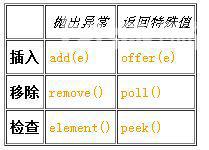


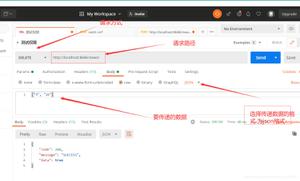
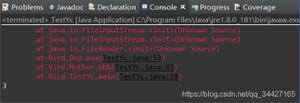

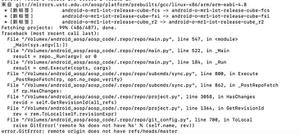

得票时间